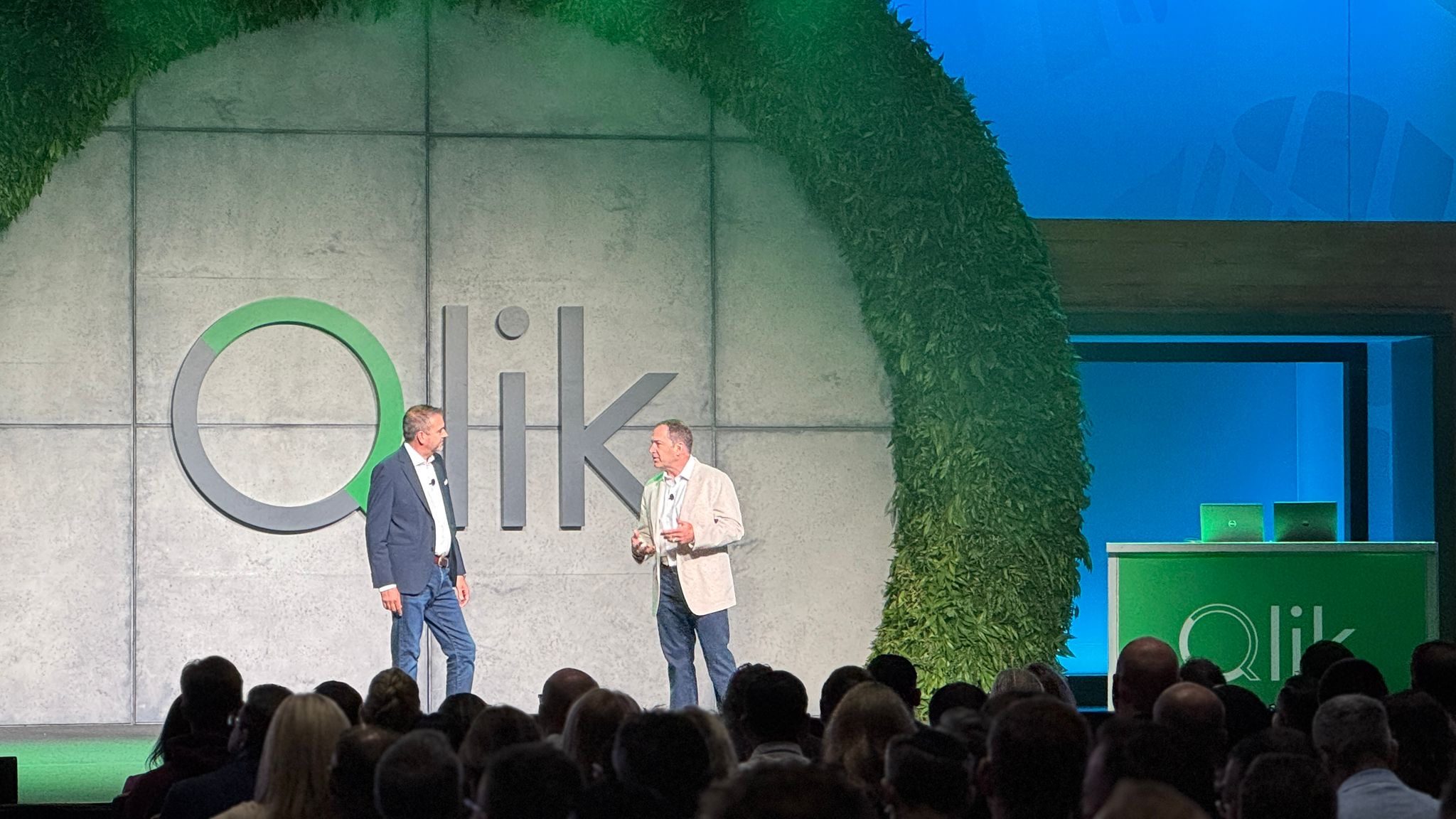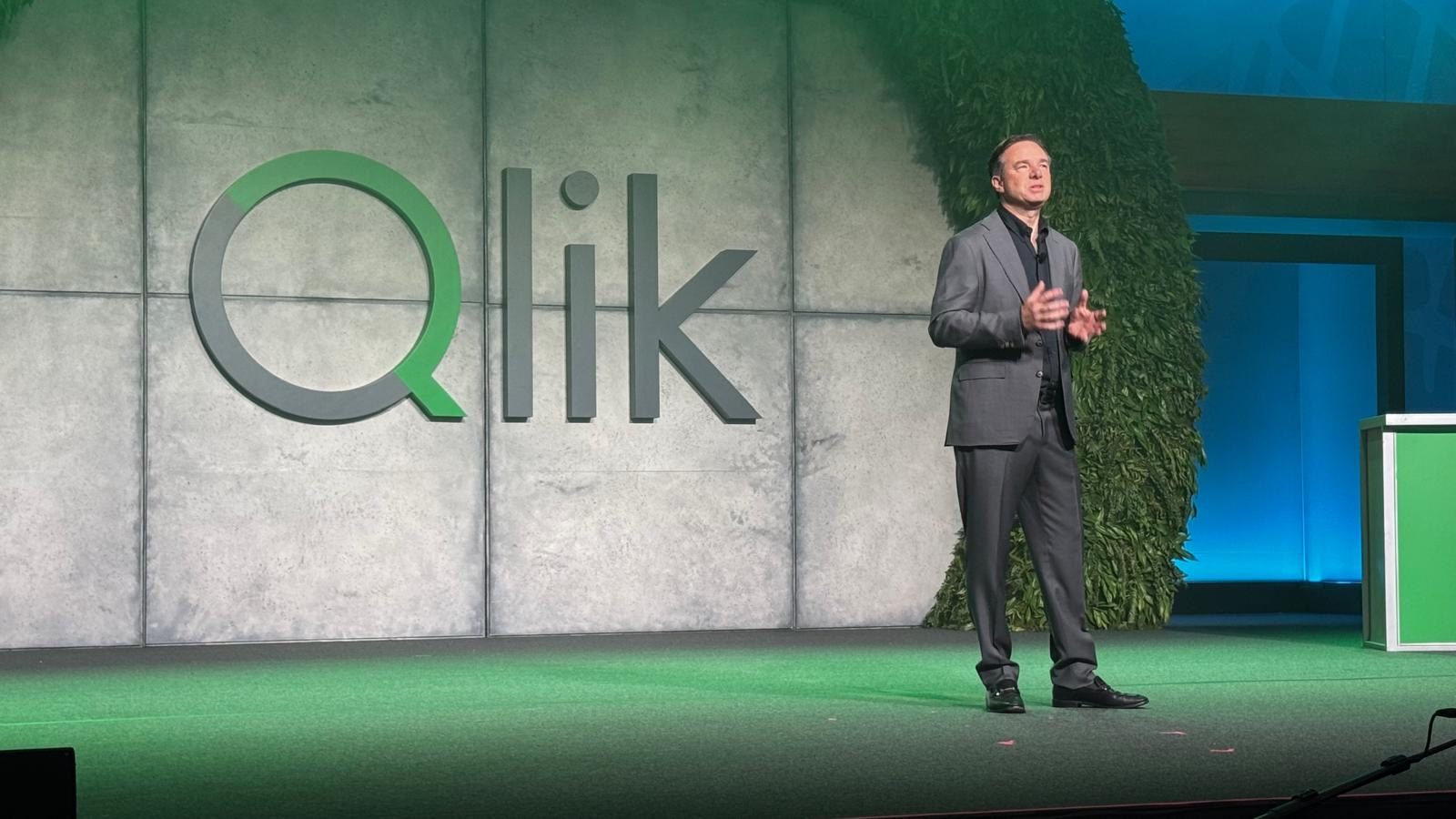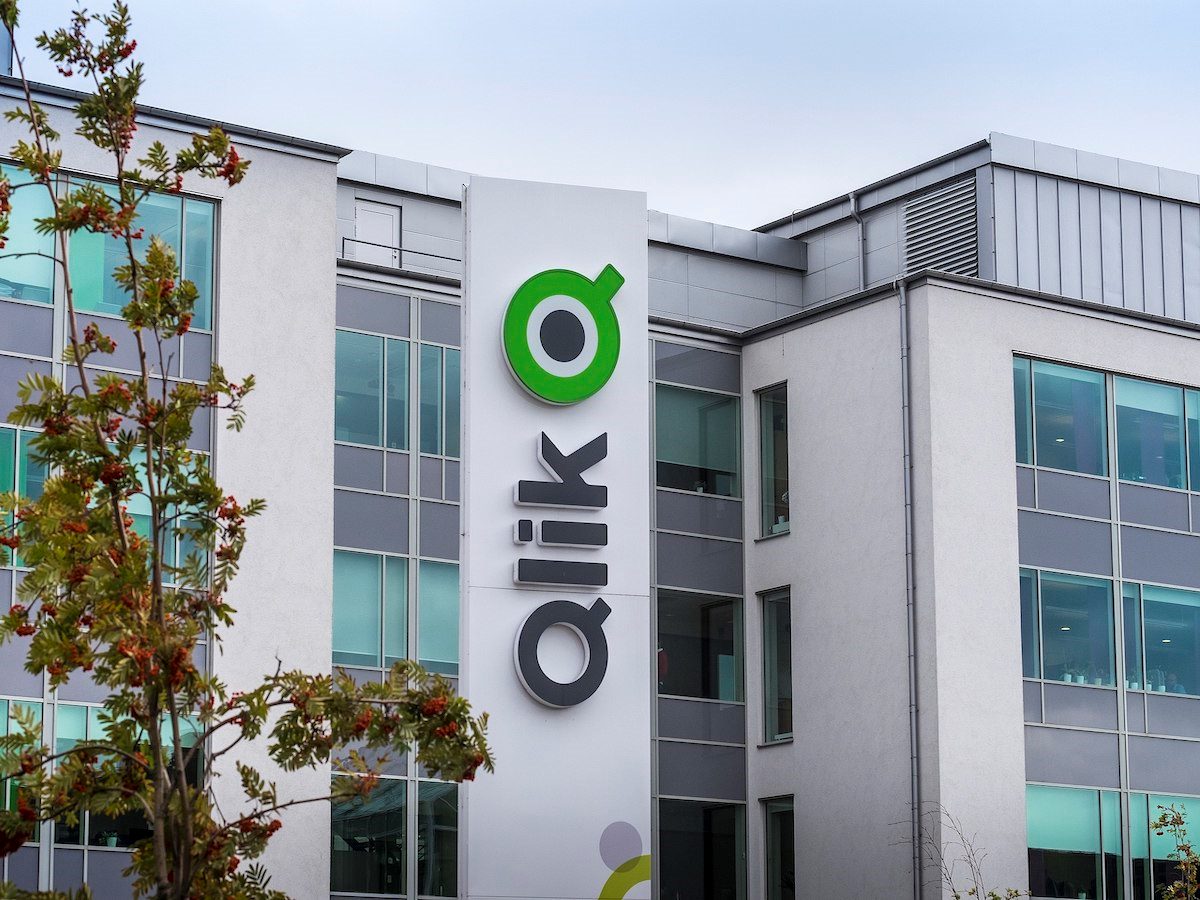In technology, disruptive waves often serve as magnifying lenses, revealing corporate strengths and weaknesses in sharper detail than anticipated. When a new technology emerges, it does not just shake up the market, it accentuates the core competencies of each competitor, making differences that were once subtle far more apparent. It is reminiscent of the parable of the blind monks describing an elephant — each monk’s understanding is limited to the part they touch. Similarly to prior technology waves, GenAI and agentic AI are amplifying distinctions within the analytics and data visualization market.

For Qlik, 2024 was a year defined by "we survived it," said CEO Mike Capone. Faced with the sweeping changes brought about by AI innovation, Qlik stayed close to its roots. Its strategic focus remained tethered to business analysts and data engineers. This emphasized, from a marketing perspective, the needs of those who build, manage and interpret datasets.
Meanwhile, competitors rushed to unlock GenAI’s potential for data consumers. The decision to continue commitment to its historical core audience, even as the market shifts toward more consumer-friendly AI-driven insights, is unexpected. While streamlining the work of business analysts and data engineers is valuable, it feels incremental compared to the broader possibilities for agentic AI. In this emerging paradigm, AI does not just support analysts; it autonomously acts on business processes, transforming how businesses operate. This is where Qlik’s strategy should be poised for expansion — beyond serving its traditional base to empowering a business user with real-time, actionable insights. To do so, it will eventually need richer automation and orchestration capabilities.
How Qlik Is Evolving Its Platform for Agentic Intelligence
Despite the above focus, Qlik has not stood still and not considered business users. Under the leadership of Nick Magnuson, head of AI at Qlik, the company is making interesting strides with machine learning (ML) and generative AI. Magnuson shared how Qlik’s multivariate time series analysis is not only powerful but also more user-friendly than competing machine learning tools. He candidly admits that the platform lacks a Jupyter Notebook environment but assures me it is on the roadmap. He gave an example of a major insurance company that’s decision sciences team prefers to use Qlik because it is faster. And Magnuson's excitement was palpable when discussing the potential of providing machine learning to agents, hinting at a more autonomous future for data analytics.
One striking takeaway for business users from my conversation with Magnuson was the shift from mere analytics to genuine prediction. This is about more than dashboards — it is foresight, built into the platform. Meanwhile, Qlik's acquisition of Kyndi marks a significant step toward inorganic modernization, bringing natural language processing (NLP), proprietary large language models (LLMs) and vector databases into its ecosystem.
Ryan Welsh, the former head of Kyndi, emphasized how AI has the potential to democratize data access for business users. Yet, the early case studies suggest the primary beneficiaries remain business analysts and data engineers. This raises a critical question: with the automation capabilities Qlik demonstrated, will this core audience change over time?
Magnuson hinted that a shift is on the horizon. Although Qlik currently claims to be early in its journey toward agent-driven analytics, Magnuson acknowledged the need for a more complete development environment to unlock that vision. However, for this to resonate, Qlik’s marketing and corporate messaging must pivot to reflect a broader ambition — one that embraces the business user as central to the company’s future, rather than just its historical stronghold. It is unclear whether this is a vision or marketing issue.
Related Article: The Cloud's Pivotal Role in AI and Business Intelligence
Qlik’s Rallying Cry: Make Your Data AI‑Ready
Despite record investments in artificial intelligence, most enterprises remain stubbornly stuck in the lab. The breakthroughs promised by AI often falter — not for lack of sophisticated models, but because the data feed models are not ready for real-world demands. Enterprises are beginning to realize that the key to unlocking AI’s potential lies not just in better algorithms but in better data. Simply put, to get out of the lab and into production, organizations must prioritize AI-ready data.
Without question, getting data right is the foundation for successful AI implementations. The goal is not just to accumulate vast amounts of data, but to transform that data into a trusted, analytics-ready foundation. If AI cannot be trusted, it will not be scaled. Trust is not something that can be retrofitted; it must be designed into data practices from the outset.
Competitive advantage in the AI era is shifting — not to those with the most advanced models, but to those who can operate AI with speed and confidence. This requires a deliberate focus on data quality, governance and integrity. In this new landscape, doing data differently is not a necessity. That is why the theme of this year's conference was “Do Data Differently.” It is a call to action for enterprises to rethink their data strategies and lay the groundwork for scalable, trustworthy AI. To compete in an AI-driven world, it is not just about having data but having data you can trust.
CEO Mike Capone on Activating AI for Real Outcomes
In his keynote, CEO Mike Capone emphasized the need for a trusted, scalable AI that drives real business outcomes. His message is clear: while many CEOs recognize the promise of AI, they struggle to extract value and articulate its impact in the boardroom.

“The challenge,” Capone noted, “is not just in deploying AI but in activating it — transforming potential into measurable results.” He underscored that in today’s chaotic and rapidly changing landscape, data must serve as a stabilizing force, enabling organizations to navigate uncertainty through AI and analytics.
Capone’s perspective, however, felt familiar — echoing industry sentiments over many years. He argued that while many talk about AI's promise, true leaders are those who act decisively, leveraging data to drive outcomes. He backed his claims with IDC statistics on AI adoption, which matched research from Dresner and MIT CISR. The takeaway? AI leaders do not wait, they need to execute and learn. They need to, as Randy Bean suggests in his book, fail fast and learn faster. Yet only 12% of executives believe their data is good enough to fuel effective AI-driven decisions. This gap between expectation and reality signals a broader issue: the need to do data differently.
Capone argued that his company has pioneered agentic AI — a proactive, decision-making form of artificial intelligence — for years, but to be fair, their agentic AI currently lacks a development environment. This is something Magnuson said he is remedying. But he is also clear that there is strength in having end-to-end process capabilities. Agentic AI, as he described, extends beyond passive analytics, actively protecting against risks and enhancing decision-making across business functions. For Capone, the future of AI involves making AI not just a tool, but a trusted partner in business strategy.
While Capone’s vision of AI is compelling, it leans heavily on familiar talking points of trust, scalability and outcome-driven execution. His call to action — to make AI “real” and economically impactful — is undeniably important, but its urgency may feel dated to some. In a world where AI’s potential has been touted for years, the real breakthrough will come from bridging the gap between aspiration and execution, turning well-worn promises into measurable business realities.
Related Article: Do's, Don'ts and Must-Haves for Agentic AI
Lessons From Qlik’s Frontline AI Deployments
Drew Clarke, VP and GM, and James Fisher, chief strategy officer at Qlik, shared the company’s detailed vision for the future of analytics — one that shifts from static dashboards to real-time, action-oriented decision-making. According to Clarke and Fisher, the analytics landscape has fundamentally changed. Business users no longer want fragmented reports or isolated insights; they demand proactive, predictive and actionable answers in real time to their questions.
This transformation is underpinned by Qlik’s support for all types of analytics, spanning both structured and unstructured data. With enhanced discovery features, users can instantly grasp what is happening, understand its implications and act without wading through endless reports.
Qlik showcased how self-service analytics is evolving, with a ChatGPT-like interface that not only generates insights but also explains how they were created. In live demos, Qlik demonstrated seamless integration with purchasing tools, multivariate time-series models that adapt dynamically to changes and real-time actions aligned with expected outcomes — particularly impactful in the retail sector. Customers that I talked to said, “I want to buy that.” Through features like trust scores, GenAI-driven discoverability and a data glossary that enhance quality and validation.
On the infrastructure side, Qlik is championing open data with a "write once, use everywhere" approach, leveraging Apache Iceberg for optimized performance and virtualization (or "mirroring") for streamlined access and execution. Clarke also highlighted agentic AI, which he stressed is a paradigm shift in data consumption and pipeline automation. Agentic AI interprets business requirements directly from users, generates data marts automatically and even constructs data pipelines, transforming the role of data engineers and dramatically boosting productivity. This addresses a critical industry gap: despite widespread access to static intelligence, only 26% of enterprises have scaled AI, and even fewer have embedded it into daily operations.
Brendan Grady, EVP and GM of Qlik’s Analytics Business Unit, underscored the importance of frictionless intelligence: “Too many systems deliver insights after the fact. We’re building something different — a platform where AI detects what matters, surfaces it in context and enables action within the analytics environment itself.” This vision is realized through Qlik’s Discovery Agent, which continuously monitors datasets, highlighting risks and opportunities before they escalate. Insights are delivered via a personalized feed that explains what is happening, why it matters and suggests next steps.
For Qlik, the future of analytics is Agentic — where intelligent, conversational interfaces allow users to interact naturally with their data, uncover insights, drive decisions and elevate productivity. Yuzuru Fukuda of Fujitsu echoed this sentiment, stating: “The ability to ask a question and get a trusted, contextual answer — across structured reports, unstructured content and automated workflows — is exactly what we’ve been waiting for.” According to Qlik’s roadmap, the companies that excel will not just experiment with analytics; they will deliver real-time execution at scale.
The Bottom Line on Qlik’s AI Evolution
Qlik's strategic focus on analyst productivity through agentic and GenAI remains a commitment to its traditional base of business analysts and data engineers, even as competitors pivot to consumer-friendly AI insights. While many are racing to democratize data consumption, Qlik is betting on enhancing the workflows of those who build and interpret datasets, a choice that, while steady, may seem incremental against the backdrop of broader agentic AI possibilities. However, under the guidance of Nick Magnuson, Qlik is making strides forward, setting the stage for more predictive analytics and real-time decision-making.
Yet, Qlik's true pivot — enabling autonomous, agent-driven analytics — still demands richer automation and a full development environment. To capture broader market momentum, Qlik must articulate a vision that embraces business users as central, not just peripheral, to its growth story. Qlik’s future, as outlined by its leaders, is agentic — where analytics shift from passive observation to proactive, real-time action, moving beyond static dashboards to frictionless intelligence that drives business outcomes.
Howard Dresner stated, “While we agree with many of the investments Qlik has made, our data shows that the adoption of AI is heavily influenced by data maturity. Those at the forefront — what we call the vanguard — are achieving success with BI because of this maturity. This same maturity will be essential for agentic AI — which will be transformative for both companies and the software industry.”
Learn how you can join our contributor community.
